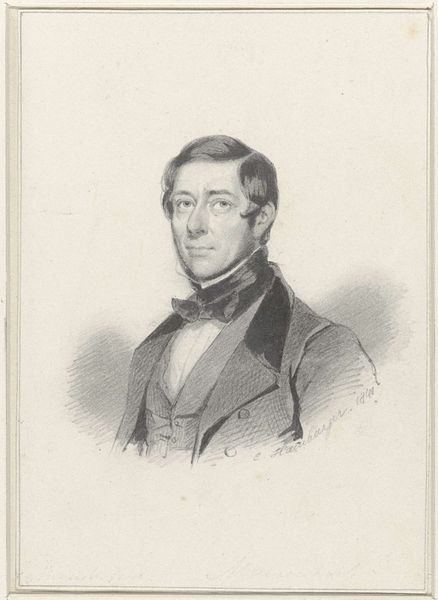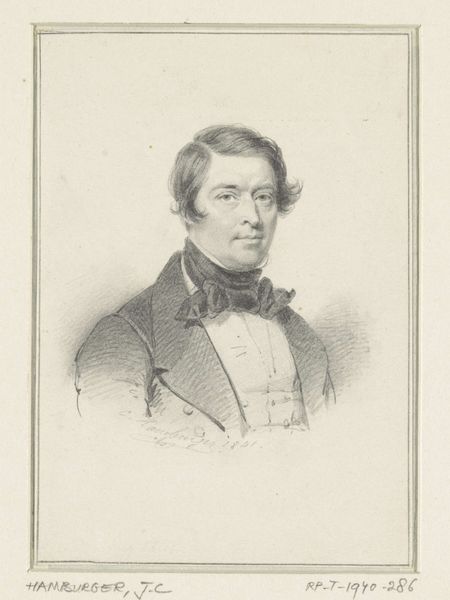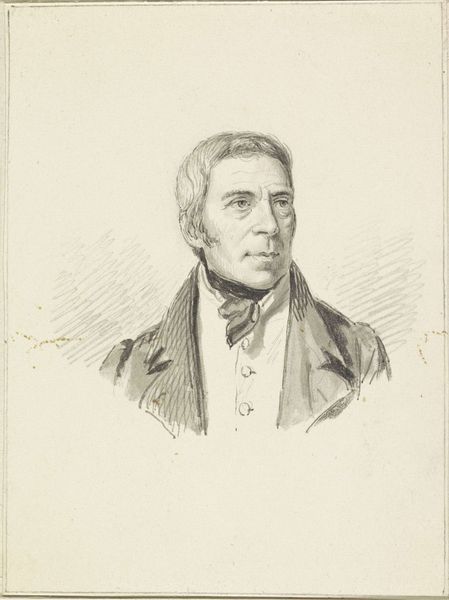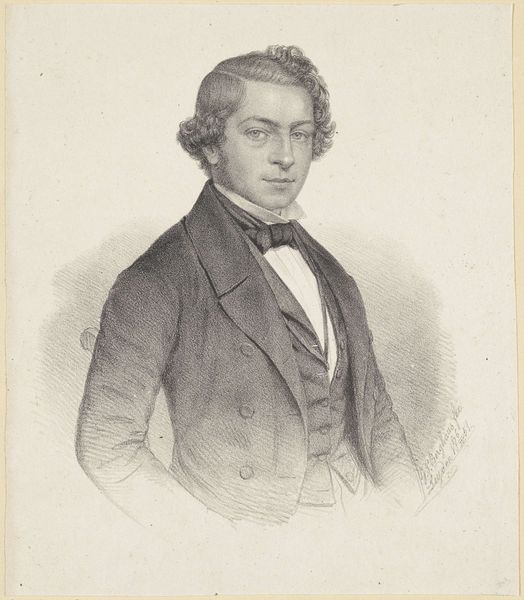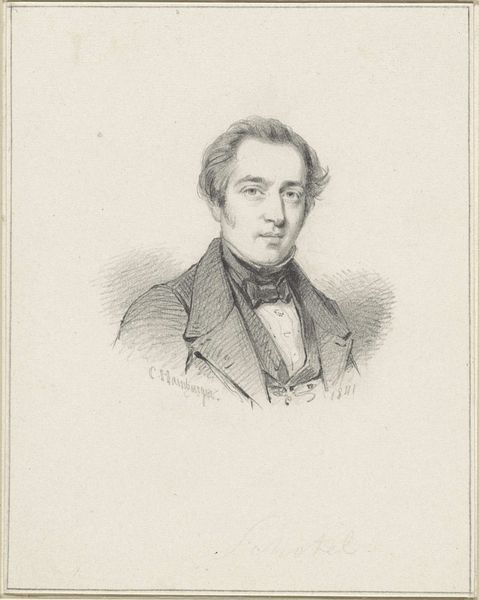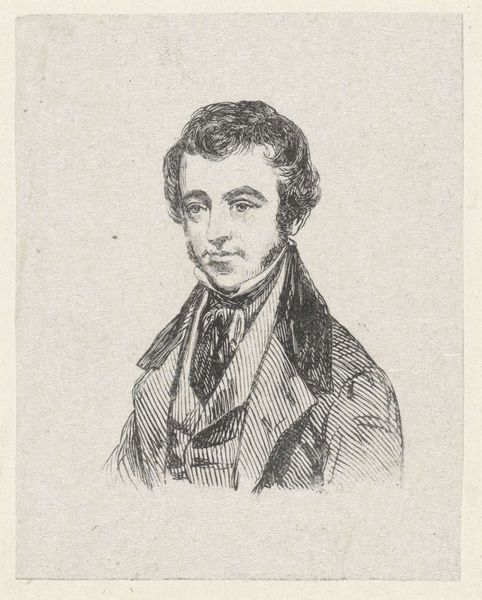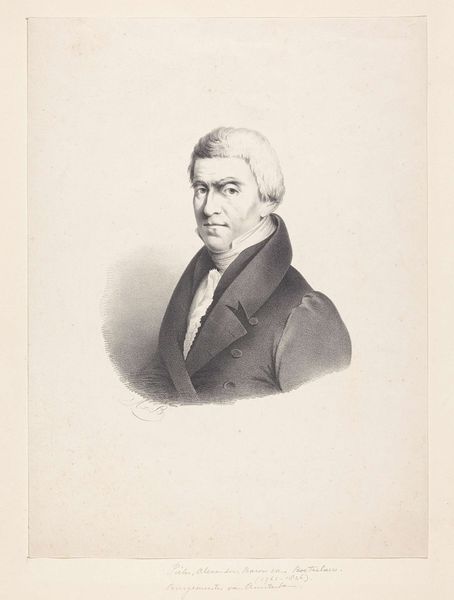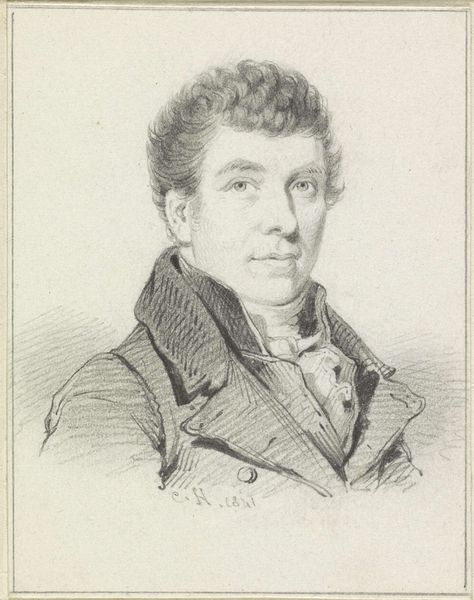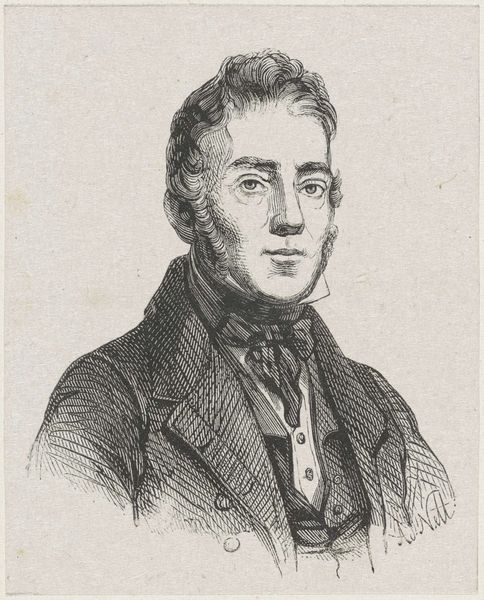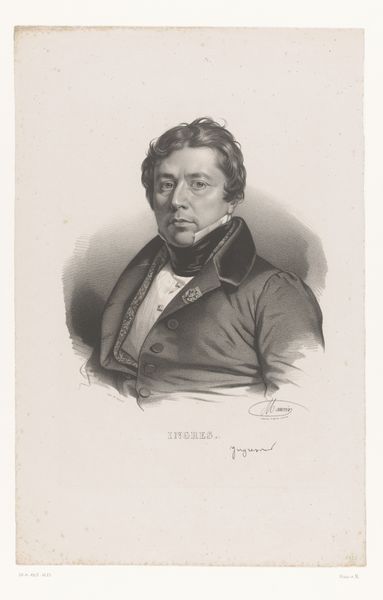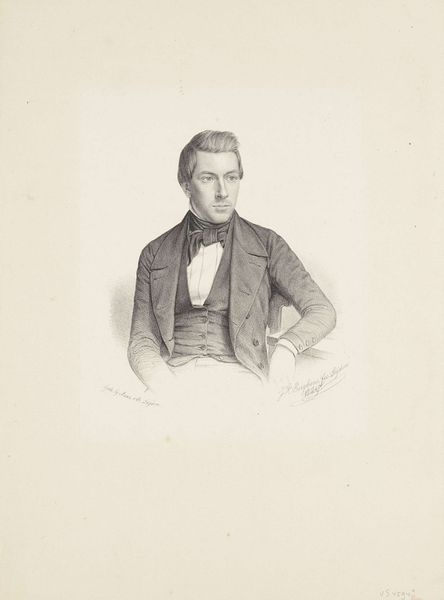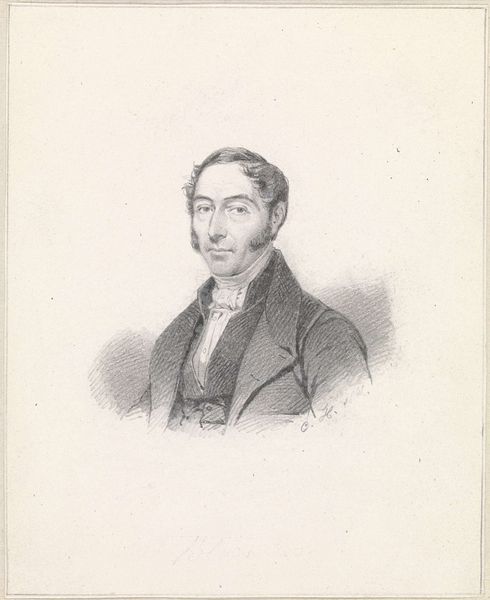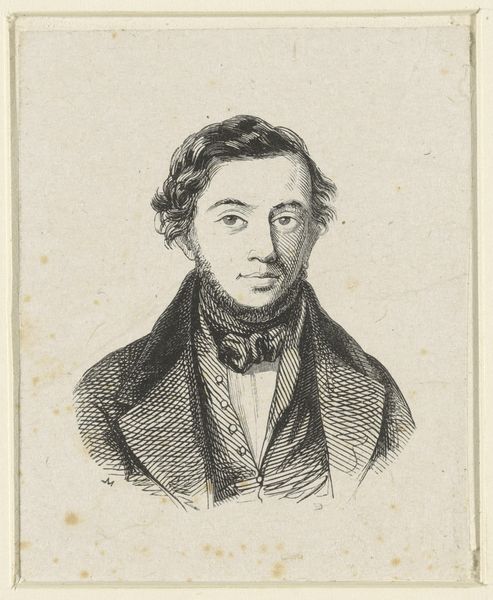
drawing, pencil
#
portrait
#
drawing
#
pencil drawing
#
pencil
#
academic-art
#
realism
Dimensions: height 130 mm, width 92 mm
Copyright: Rijks Museum: Open Domain
Curator: Welcome. We're looking at Coenraad Hamburger’s "Portret van Albertus Alides Steenbergen," created in 1841. It's a meticulously rendered pencil drawing. Editor: The immediate impression is one of quiet dignity. There's a certain romanticism, but also a kind of reserved practicality in the subject's expression and dress. Curator: Hamburger's command of pencil as a medium is striking. Look at the layered hatching used to build up the textures of Steenbergen's coat and hair. The artist emphasizes the labor involved in achieving such a realistic image, drawing from the Academic art style. It clearly places value in highly skilled handwork. Editor: Absolutely, and let’s consider the subject, Albertus Alides Steenbergen. What role did he play in 19th century Dutch society? His clothing and demeanor signal bourgeois respectability, speaking to class structures and societal expectations of the time. Was this a commission, perhaps solidifying Steenbergen’s status? How does the artist portray this social standing through clothing and expression? Curator: Likely a commission, portraits were quite popular among the rising middle class. What interests me is Hamburger's choice of pencil. In a period increasingly dominated by industrial printing processes, a finely crafted pencil drawing asserts the value of artisanal skill and direct engagement with materials. Editor: True, and the realism suggests an adherence to specific aesthetic principles of the era. We must examine this piece in relation to its contemporaries and acknowledge any inherent power dynamics at play. Curator: Yes, we see Realism embedded, which moves away from the elevated narratives, a common trend in painting, focusing instead on direct observation. This shift has implications for artistic labor as well; it demands a different kind of training, perhaps one that emphasized draftsmanship above all else. Editor: This emphasis potentially democratized art making. It could indicate an evolving patronage system with a new interest from rising social figures such as Albertus Steenbergen who desired to participate and perpetuate a specific ideology in Dutch society. Curator: Looking again at Hamburger's refined shading, I’m drawn back to his expert control over material—a humble pencil used to achieve astonishing nuance. Editor: Indeed. Through examining the role this work has had culturally, in relationship to craft and skill and those societal contexts, we're gaining insights beyond just appreciating it's aesthetics.
Comments
No comments
Be the first to comment and join the conversation on the ultimate creative platform.
